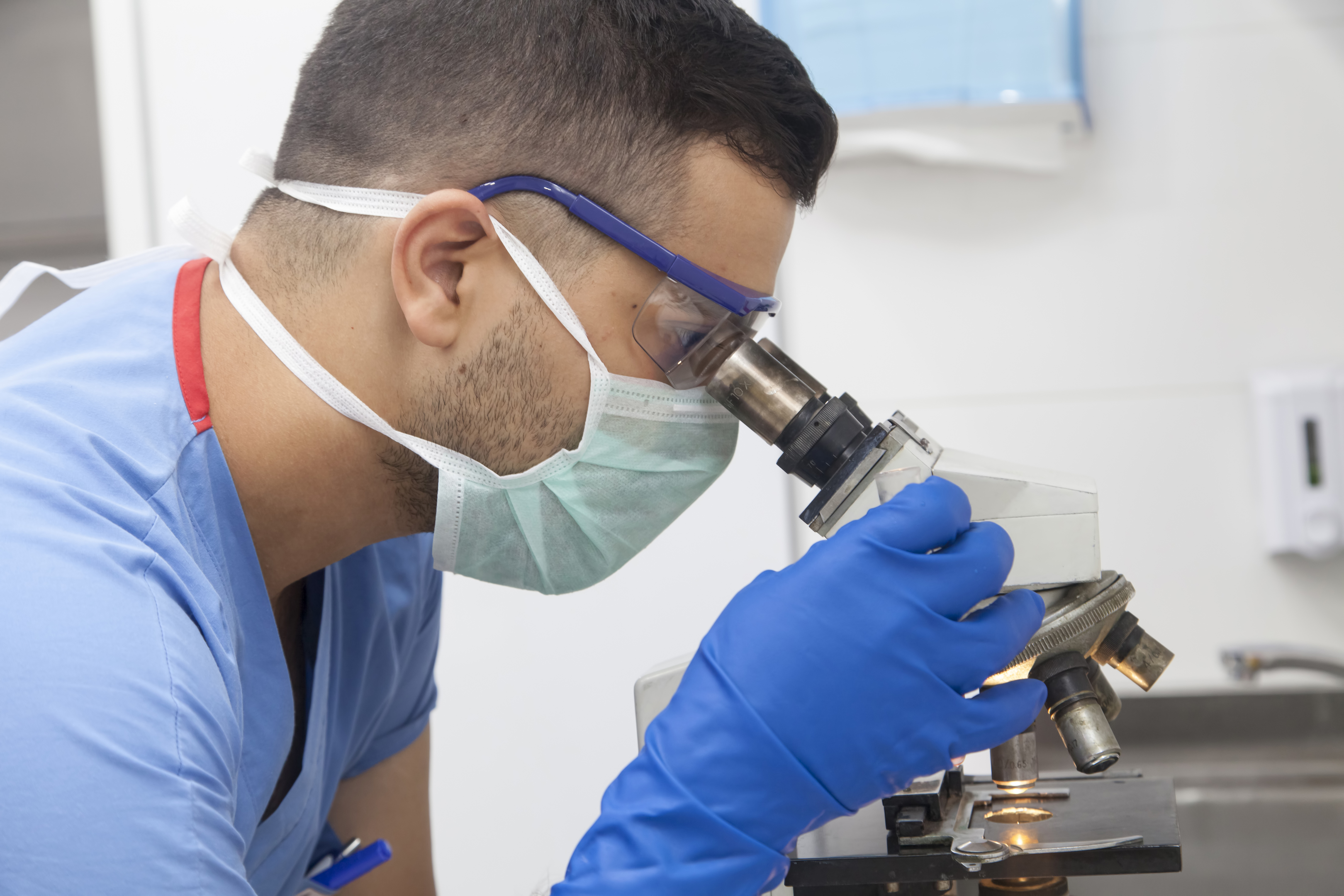
A dual therapy using a patient’s own genetically modified cells has led to 89% of patients going into complete remission from a type of leukaemia.
A clinical trial at the University of Pennsylvania found that combining CAR-T cell therapy with standard treatment dramatically boosts the number who are on their way to being cured.
The same university treated Mike Brandon from Bristol last year, who was given no more treatment options in the UK for his advanced leukaemia.
A second study, presented at the Americna Society of Clinical Oncology (ASCO) conference in Chicago, showed that 33 out of 35 (94%) of patients with multiple myeloma went into remission after CAR-T cell therapy.
CAR-T works by taking some of a patient’s own immune cells (T cells) via a blood sample, and genetically modifying them in the lab so that they target and kill cancer cells.
The modified cells are grown in the lab and then re-infused into the patient.
In the University of Pennsylvania study, which was funded by pharmaceutical giant Novartis, 10 patients were given a CAR-T cell therapy (called CTL119) alongside a standard drug, ibrutinib.
They all had chronic lymphocytic leukemia (CLL), which is not considered to be curable.
All patients had been on ibrutinib for at least six months and had failed to achieve remission on multiple previous treatments. They were considered to have high-risk disease.
Two years previously, in a similar trial of CAR-T at the university, 29% of patients achieved remission.
However, adding CTL119 to ibrutinib in the latest trial boosted remission rates to 89%.
More than 3,500 people are diagnosed with CLL each year in the UK and just over 1,000 die from it.
While 60% of people can get some sort of response on ibrutinib, which is approved on the NHS, 40% do not.
Those on the trial were given an infusion of CTL119 over three days, with each infusion taking about four hours.
Most developed side-effects of fever and flu-like symptoms but these passed in two to five days.
Eight out of nine patients who could be evaluated had no evidence of cancer in their bone marrow at three months, and all remained in remission at six months.
One patient was found to have a partial response in their marrow.
Dr Saar Gill, who led the study, said the results were “powerful”, adding: “Our hope is that the disease is so deeply in remission that it never comes back.”
He said the future hope was that the combined therapy could be used earlier in the disease, possibly at the point of diagnosis.
Last year, the University of Pennsylvania treated Mr Brandon after his wife Kate launched a fundraising campaign to save his life.
UK doctors had said they were unable to do anything to treat the acute lymphoblastic leukaemia (ALL) that was killing him.
But in October, Mrs Brandon said CAR-T had worked, saying: “Prior to starting the trial, Mike’s bone marrow was made up of 90% leukaemia cells and he was given weeks to live but thanks to the cutting-edge CAR T-cell therapy he received in the US he is now cancer free.”
Dr Aine McCarthy, senior science information officer at Cancer Research UK, said CAR-T cell therapy had been showing potential in leukaemia and lymphoma.
She said: “The results from this small study are promising, showing that most chronic lymphocytic leukaemia patients treated with these modified cells, in combination with another drug ibrutinib, had no signs of cancer after six months.
“Further research involving more patients who are followed up for longer is needed before it will become clear if CAR-T cell therapy should be used to treat this cancer, and to identify which patients would benefit from it.”
A second study presented at ASCO showed that 33 out of 35 (94%) of patients with multiple myeloma went into remission after CAR-T cell therapy.
They were all patients whose cancer had got worse or who were resistant to therapy.
ASCO expert Dr Michael Sabel said: “It’s rare to see such high response rates, especially for a hard-to-treat cancer.”
The study was from the the Second Affiliated Hospital of Xi’an Jiaotong University in Xi’an, China.

Enjoy the convenience of having The Sunday Post delivered as a digital ePaper straight to your smartphone, tablet or computer.
Subscribe for only £5.49 a month and enjoy all the benefits of the printed paper as a digital replica.
Subscribe